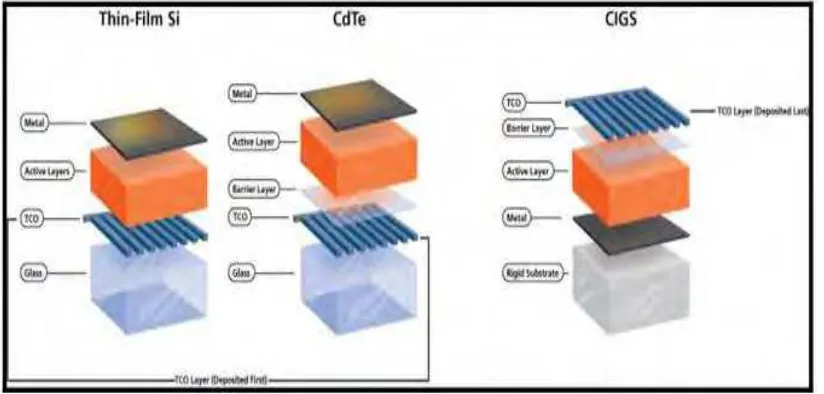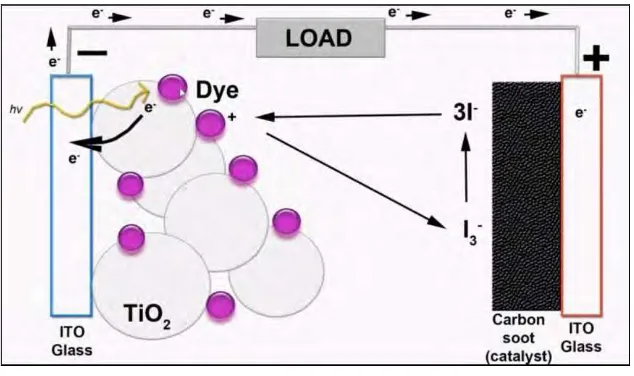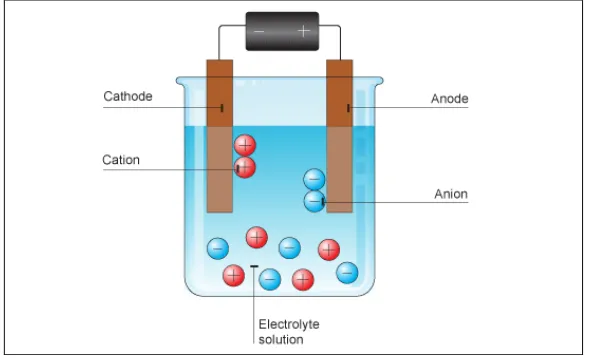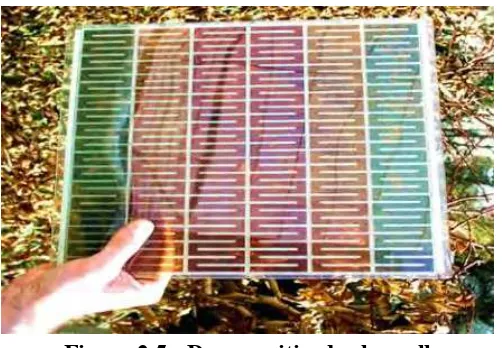PERFORMANCE OF TROPICAL DYE-SENSITIZED SOLAR CELLS
NURFADZILLAH BINTI ALI
This report is submitted in partial fulfillment of requirement for the Bachelor of Electronic engineering (Industrial Electronics) with Honors
Faculty of Electronics & Computer Engineering University technical Malaysia Melaka
iii
“I hereby, declare this report is the result of my own research except as cited of the reference”
Signature : ……….
Author Name : NURFADZILLAH BINTI ALI
iv
“I / we acknowledge that I have read this piece in my / our this work is sufficient in scope and quality for the award of Bachelor of Electronic Engineering
(Industrial Electronics) With Honors"
Signature : ………. Name : FAIZ BIN ARITH
v
This book dedicated to Mom and Dad.
Thank you for your love and sacrifice
vi
ACKNOWLEDGMENT
Bismillahirahmanirahim.
Firstly, I would like to thanks Allah Almighty for His blessing for his power for me to complete this thesis and my final year project called “Performance of Tropical Dye-Sensitized Solar Cells”.
Furthermore, I would like to take this opportunity to express my deepest gratitude to Mr. Faiz b. Arith as my supervisor. His invaluable guidance and full support for give knowledge that make this project complete according to planning. I appreciate him with unlimited positive advice and helping me in order to understand the chemical term for the whole project.
I would like to express my gratefulness towards my parents Mdm. Rohani bt. Abang and Mr. Ali b. Suhaili that always give me the full support and advice until completing my Final Year Project. Lastly but not least, my sincerely appreciation also extends to all my friends who give encouragement and helping me in completion of this project at Universiti Teknikal Malaysia Melaka.
vii
ABTRACT
Sunlight possesses generated current and voltage to generate the power energy of electricity. Therefore, the fundamental measure from the solar cells procedure will be generation of light whereby must regarded how to produced the carrier. Dye-sensitized solar cell is known to be the low cost production because of the material is easily to get. Dye-sensitized solar cell (DSSC) is fabricated using the screen printing method which Melastoma Malabathricum and Cucurma Longa used as the sensitizer of the solar cell. These natural dyes were extracted without addition of any chemical because to identify the parameters or the characteristic of the solar cell. Plus, the efficiency may affect due to the reaction. Titanium dioxide (TiO2) is
viii
ABSTRAK
ix
TABLE OF CONTENT
CHAPTER TITLE PAGE
DECLARATION ii
DEDICATION v
ACKNOWLEDGEMENT vi
ABSTRACT vii
ABSTRAK viii
TABLE OF CONTENT ix
LIST OF FIGURES xi
LIST OF TABLES xii
LIST OF ABBREVIATION xiii
I INTRODUCTION 1
1.1 Introduction 1
1.2 Objective 5
1.3 Problem statement 5
1.4 Scope 6
1.5 Brief methodology 6
II LITERATURE REVIEW 7
2.1 Overview 7
2.2 Working Principle 7
2.3 Brief History 8
2.4 Generation 9
x
III METHODOLOGY 19
3.1 Overview 19
3.2 Safety 19
3.2.1 Personal Protective Equipment 19
3.2.2 Chemical Safety 21
3.3 Natural Dye Sensitizer 23
3.4 Equipments 24
3.5 Types of Deposition 28
3.6 Procedures 29
3.6.1 Preparing TiO2 Glass 29 3.6.2 Identify Conductivity 30 3.6.3 TiO2 Mixture and Carbon Soot 31 3.6.4 Deposit TiO2 and Annealing 32 3.6.5 Deposit Dye Sensitizer 35
3.6.6 Check Connectivity 36
3.7 Air Mass 37
IV RESULTS AND DISCUSSION 40
4.1 Overview 40
4.2 Results 40
4.2.1 Comparison on Two Types of Dyes 41
4.3 Analysis 41
4.3.1 X-ray Diffraction (XRD) 42
4.3.2 I-V Characteristic 43
4.3.3 Calculation 44
4.4 Discussion 47
V CONCLUSION AND RECOMMENDATION 49
5.1 Conclusion Project 49
5.2 Recommendation 50
xi
LIST OF FIGURE
FIGURE TITLE PAGES
1.1 Example of renewable energy 2
1.2 Three types of common thin film solar energy 3
1.3 Flexible dye-sensitized solar cell 4
2.1 Chemical reaction 7
2.2 Electrolysis 8
2.3 Black silicon-based solar cell 9
2.4 First Solar CdTe solar cell 9
2.5 Dye-sensitized solar cell 10
2.6 Basic molecule structure of anthocyanin and the binding with
TiO2 11
2.7 Structure of Curcumin a) Keto form b) enol form 12
2.8 Efficiency reported by NREL 15
2.9 UV-vis absorption spectra of (A) flowery knotweed (B)
begonis, and (C) perilla in ethanol solution 17
3.1 Safety goggles 20
3.2 Face mask 20
3.3 Safety gloves 21
3.4 Hazard sign 21
3.5 Corrosive 22
3.6 Flammable 22
3.7 Toxic 23
3.8 Melastoma malabathricum 23
3.9 Cucurma longa 24
3.10 Chemical fluid, (a) acetone (b) ethanol (c) Distil water 24 3.11 (a) Iodine crystal (b) Potassium iodide (c) Titanium dioxide 25
xii
3.13 Diamond glass cutter 26
3.14 Tweezers 26
3.15 Pipette 27
3.16 Schematic representations of eight CdTe thin-film deposition
techniques 28
3.17 Ultrasonic bath 29
3.18 Cleaning process 29
3.19 Dry using nitrogen gas 30
3.20 Indium tin oxide coated glass slide 30
3.21 Titanium dioxide paste 31
3.22 Carbon soot 32
3.23 Screen printing table 32
3.24 Screen printing process 33
3.25 Deposited TiO2 34
3.26 Heating on the hotplate 34
3.27 Applying sensitizer 35
3.28 Single cell of dye-sensitized solar cell 36
3.29 Measure the connectivity 36
3.30 Air mass 37
4.1 Dye-sensitized solar cell (a) anode (b) cathode 40
4.2 XRD machine 42
4.3 “Anatomy” of XRD pattern 42
4.4 XRD analysis 43
4.5 I-V Characteristic 43
4.6 Connection to measured current and voltage 47
5.1 Portable charger 50
xiii
LIST OF TABLE
TABLE TITLE PAGES
2.1 Best research-cell efficiencies as of 2012/5, compiled from National Renewable Energy Laboratory’s chart of best
research-cell efficiencies 13
4.1 Comparison between Turmeric and Shrub 41
4.2 Fill factor and Efficiency 46
xiv
LIST OF ABBREVIATION
CdTe - Cadmium Telluride
CIGS - Copper Indium Gallium Selenide DSSC - Dye-Sensitized Solar Cell
DSSCs / DSCs - Dye-Sensitized Solar Cells OPVCs - Organic Photovoltaic Cells
NREL - National Renewable Energy Laboratory TiO2 - Titanium Dioxide
CHAPTER 1
INTRODUCTION
1.1 Introduction
2
Figure 1.1 : Example of renewable energy
Malaysia renewable energy is made of biomass, biogas and modest hydro and also solar cells. Biogas is usually identifies a new petrol that is generated by your breakdown of the normal subject inside the lack of oxygen. Biomass create subject operating out of carbon dioxide, hydrogen along with oxygen in term of modest hydro could be the improvement regarding hydroelectric strength as it is usually a renewable energy in which changes sunlight energy into electrical energy. There are four common solar cells and there are monocrytalline, polycrystalline, thin film and hybrid solar cell.
3
Photovoltaic is currently the fastest developing technology in which accustomed to make electrical energy throughout electricity production. Over 90% of the material found in solar based on silicon for the reason that source material. This material is among the most valuable pieces of solar panels based on silicon. Thin films with silicon-based solar panels tend to be inexpensive choice. There are about three most common thin films solar panels these days for instance Copper Indium Gallium Selenide (CIGS), Cadmium Telluride (CdTe) along with Amorphous Silicon (a-Si).
Figure 1.2 : Three types of common thin film solar cell
Figure 1.2 shows that three types of thin film solar panels in which common these days. CIGS has the best efficiency with having 20. 3% compared to the other two only 16. 5% along with 13. 3% for CdTe and as well a-Si. These efficiencies for cells area from ~0.25cm2 to ~1cm2 yet smallest cell area is a-Si with 0.25cm2. TCO
or transparent conductive oxide applicable to solar cells to increase the efficiency of the converted solar cells and matched with absorption spectrum of the solar cells. This is because solar cells suffer efficiency loss due to spectral mismatch. Although CIGS has highest efficiency yet CdTe has slightly different efficiency and also low cost in manufacturing. These low cost can reduce the money used in production and bill payment for user[2].
4
of solar cell[3]. Dye-sensitized solar cell made of low cost materials and cheaper manufacturer. The flexibility of the dye-sensitized solar cell give the advantage as it makes life goes easier. This is because due to the flexible dye-sensitized solar cell, it can be carrying out even can be fold and save more space. It can absorb diffused sunlight and fluorescent light. Moreover, the solar cells also work in cloudy weather and low light condition.
Figure 1.3 : Flexible dye-sensitized solar cell[4]
When the cost has been the benefit of the dye-sensitized solar cell, there are also drawbacks such as the current efficiency is still low compared to the other traditional solar cell. The electrolyte solution that used in developing the solar cell contains volatile organic solvents and must carefully seal[5]. Generally, dye-sensitized solar technology uses liquid electrolyte that has temperature stability problems. For example, at the low temperature, the electrolyte may freeze and stopping power production as well as lead to physical damage. While at higher temperature it will cause the electrolyte to expand and the panel sealing process a major problem.
5
dyes it may create different colour or even pattern for the solar cell. Although the efficiency not as high as the other, but currently even small increases in the dye-sensitized solar cell conversion efficiency may cause them suitable for some roles[6].
1.2 Objective
1) To develop low cost fabrication dye-sensitized solar cells.
The idea is to produce a simplest method and inexpensive compared to the traditional solar cells. Plus, it is using the cheaper material and abundant.
2) To analyze the parameters characteristic of two tropical dye By using two tropical dyes; shrub and turmeric, it used as the sensitizer of the dye-sensitized solar cells. In order to analyzed the characteristic, it will coat TiO2 and carbon soot.
1.3 Problem Statement
The increasing demand on fossil fuel is shocking as the increasing population worldwide. Therefore, the solar cell is produced to get the solar energy that generates electricity from the sun. But the cost of the crystal silicon-based production is massively high with the cost.
Cadmium telluride is the promising solar technology with the production cost as low as USD 0.75. In other hand, the solar cell is the biggest in Malaysia under First Solar Company. Although the cadmium is abundant, it is highly toxic and not safe for other people. Plus, the fabrication cannot be done in a free space because it will harm community.
6
1.4 Scope
The objective of the project has been identified yet to achieve the objective, the scope of the project need to be identified. The scope projects includes :
1) The performances of the dye-sensitized solar cells not only depend on the sensitizer but also depend on the viscosity of titanium dioxide.
2) To ensure the result of the parameters is equivalent, the annealing process is equal to 200C.
3) The titanium dioxide size area equals to 0.5 x 0.5.
1.5 Brief methodology
In this thesis, there will be five chapters where each chapter described all the project flow including the fundamental of the solar cell and also the equipments used in the project.
Chapter 1 : A brief introduction of the recent issue regarding the non- renewable sources. In addition, the aim the project as well as the problem statement and the scope of the project will be explained further in the chapter.
Chapter 2 : The fundamental of the solar cells will be described in the chapter and also the history of the solar cell may be explained as well. Furthermore, the feasibility study that related with the project also been explained in the chapter.
Chapter 3 : Methodology is the process that used in the project. In this chapter, the equipments and all the materials are explained. Plus, the procedures to fabricate the solar cell also included.
Chapter 4 : After the process done, the result and discussion as well as the analysis will be described and explained in this chapter. Nevertheless, the calculation of efficiency also been defined.
7
CHAPTER 2
LITERATURE REVIEW
2.1 Overview
This chapter includes the background study about the solar cell specifically about dye-sensitized solar cell also the working principle of the solar cell itself. In addition, this chapter will include the history or generation of the solar cell. It also discusses on the deposition of the solar cells.
2.2 Working principle
8
When light hits the solar cells, the anthocyanin dye molecules absorb the light and inject electrons into the conduction band of the semiconducting titanium dioxide (TiO2). The anthocyanin dye then oxidized during the process. The electrons in the
titanium dioxide migrant along and eventually hit the conductive indium tin oxide (ITO) glass. After that, it flows as a current through the load. Then, the electrons leave the load and go to the back indium tin-oxide glass. Within the process, they reduce the tri-iodide ions into iodide ions using the carbon soot as the catalyst to speed up the reaction. The chemical electrolyte in the cell then closes the circuit so that the electrons are returned back to the dye molecules. The iodide itself becomes tri-iodide again and then reduced dye-molecules are now ready to convert the next photons of light[7].
2.3 Brief History
The discovery of photovoltaic happened in 1839 when Alexandre Edmond Becquerel the French physicist explains how sunlight can generate the electricity[8]. This is happen when he experimenting two metal electrodes or electrolytic cell placed in electricity-conducting solution. Then he found that electrical current could be increase when exposed to light.
Figure 2.2 : Electrolysis
9
2.4 Generations
Solar cells are divided into three main categories called generations. The first generation contains solar cells that are relatively expensive to produce. Traditional solar cells are made from silicon, are currently the most efficient solar cells. Silicon based solar cells long lasting compared to non-silicon but highly risk loss some efficiency as the temperature heating up highly.
Figure 2.3 : Black silicon-based solar cell
The second generation contains types of solar cells that have an even lower efficiency, but much cheaper to produce, such that the cost per watt is lower than in first generation cells. Usually second generation solar cells are called thin-film solar cells such as amorphous silicon, CdTe and CIGS. The third generation solar cells are being made from variety of new materials including conventional printing press technologies, organic dyes and conductive plastics.
10
The third generation is used about cells that less efficient. Most techniques of this generation is not yet commercial, but there is a lot of research going on as the goal is to make the third generation solar cells cheap to produce.
Figure 2.5 : Dye-sensitized solar cell
2.5 Feasibility study
A dye-sensitized solar cell also called as the Grätzel cell as it was named upon Michael Grätzel name because the solar cell was invented by him and Brian O’Regan during the year of 1991. The dye catches photons of incoming light which are sunlight and ambient artificial light[9]. Then use the energy to excite electrons; behaving like chlorophyll in photosynthesis. Grätzel has used mostly artificial dyes but also try some of natural dye. So the idea is can we use any dyes to generate electricity?


![Figure 1.3 : Flexible dye-sensitized solar cell[4]](https://thumb-ap.123doks.com/thumbv2/123dok/523575.60179/18.595.179.461.208.390/figure-flexible-dye-sensitized-solar-cell.webp)


